WARNING! DEATH or SERIOUS INJURY can occur:
| • | Follow all instruction on the child restraint and in the vehicle's owner's manual. |
Bucket Seat

60/40 Bench Seat
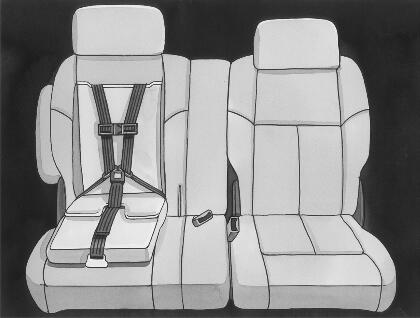
If your vehicle has this option in a bucket seat, each bucket seat that has the built-in child restraint fits in only one location in your vehicle. To find out where a bucket seat that has a built-in child restraint must be located in your vehicle see Rear Seat Operation . If your vehicle has this option in a 60/40 bench seat, this bench seat will only fit in the second row of your vehicle. In both types of seats, the built-in child restraint works the same way.
This child restraint system conforms to all applicable Federal Motor Vehicle Safety Standards.
Use only with children who weigh between 22 and 40 pounds (10 and 18 kg) and whose height is between 33.5 and 40 inches (850 and 1 016 mm). Use only with children whose shoulders are below the shoulder belt slots for the harness system and who are capable of sitting upright alone.
The child should also be at least one year old. It is important to use a rear-facing infant restraint until the child is at least one year old. A rear-facing restraint gives the infant's head, neck and body the support they would need in a crash. See Older Children or Infants and Young Children .
A child whose weight is over 40 pounds, whose height is over 40 inches or whose shoulders are above the shoulder belt slots for the harness system, should be restrained in an add-on booster seat appropriate for the child's size. See Child Restraint Systems . Once the booster seat is outgrown, the child should sit on the vehicle's regular seat and use the vehicle's safety belts.
Caution: Using the vehicle's built-in child restraint as a booster seat for a larger child could cause injury to the child in a sudden stop or crash. A child whose weight is over 40 lbs (18 kg), whose height is over 40 in (1 016 mm) or whose shoulders are above the shoulder belt slots for the harness system should use a restraint system that is appropriate for their size, either an add-on booster seat or the vehicle's safety belt. See Child Restraint Systems or Older Children .
Securing a Child in the Built-In Child Restraint
- Raise the head restraint until the lower edge of the head restraint is even with the top of the seatback.
- Rotate the head restraint rearward until it touches the top of the seatback. Make sure there is no gap between the lower edge of the head restraint and the top of the seatback.
- Lower the child restraint cushion.
- You will be using the child restraint's harness (A) to secure your child. Do not use the vehicle's safety belts.
- Before placing the child in the child restraint, add slack to the shoulder harness. Pull the black shoulder harness release strap firmly. At the same time pull both shoulder harness straps through the slots in the seatback as shown.
- Place the child on the child restraint cushion.
- Select only one side of the harness. Place the harness over the child's shoulder.
- Push the latch plate (B) into the buckle until it clicks.
- Place the other side of the harness over the child's shoulder.
- Push the latch plate into the buckle until it clicks.
- Pull up on the latch plates to make sure they are secure.
- Now fasten the left and right halves of the shoulder harness clip together. The clip can be easily pulled apart and is designed to pull apart during a collision.
- Pull the shoulder harness adjustment strap (C) firmly until the harness is snugly adjusted around the child. You should not be able to put more than two fingers between the harness and the child's chest. Make sure the harness and buckle strap are not twisted.
- Adjust the position of the harness on the child's shoulder by moving the clip along the harness until it is level with the child's armpits. On each side of the harness, the shoulder part should be centered on the child's shoulder. The harness should be away from the child's face and neck, but not falling from the child's shoulders.
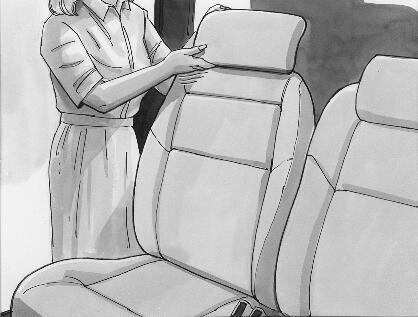
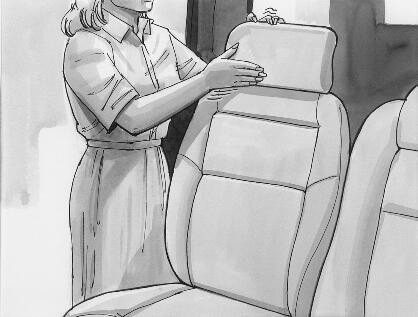
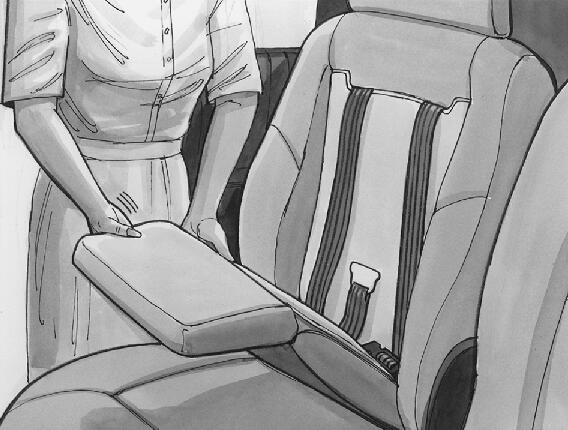
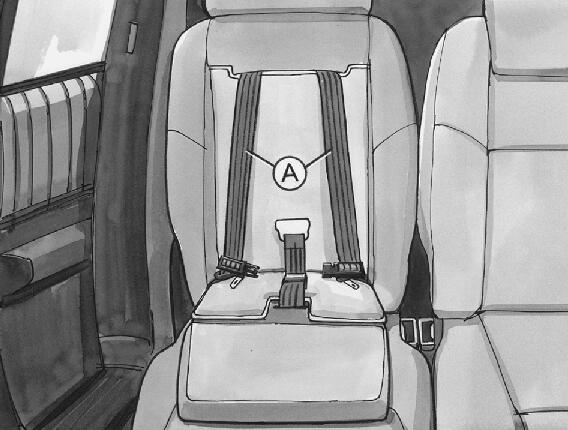
Caution: Using the vehicle's regular safety belts on a child seated on the built-in child restraint cushion can cause serious injury to the child in a sudden stop or crash. Secure the child using the built-in child restraint's harness.
WARNING: FAILURE TO FOLLOW THE MANUFACTURER'S INSTRUCTIONS ON THE USE OF THIS CHILD RESTRAINT SYSTEM CAN RESULT IN YOUR CHILD STRIKING THE VEHICLE'S INTERIOR DURING A SUDDEN STOP OR CRASH.
SNUGLY ADJUST THE BELTS PROVIDED WITH THIS CHILD RESTRAINT AROUND YOUR CHILD.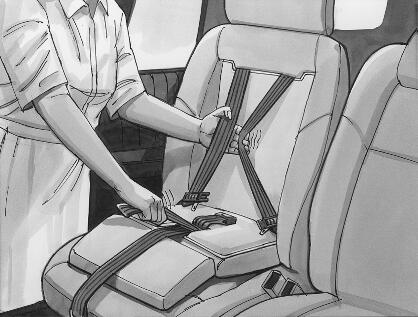
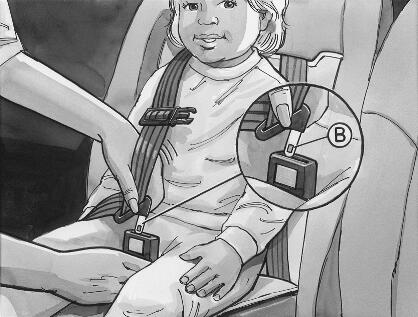
Be sure the buckle is free of any foreign objects that may prevent you from securing the latch plates. If you can not secure a latch plate, see your dealer for service before using the child restraint.
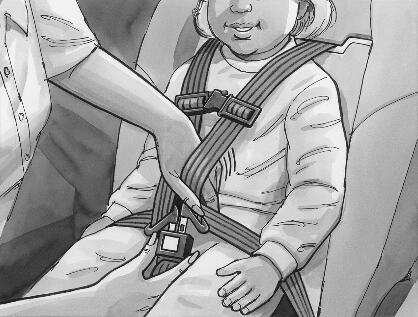
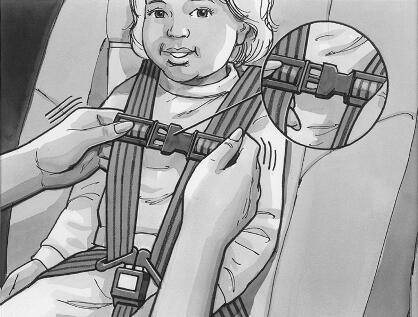
Caution: A built-in child restraint harness that is not properly adjusted can cause injury to the child in a sudden stop or collision. A harness that is loose, twisted, worn improperly or improperly fastened will not be able to restrain the child's upper body. Make sure the harness is adjusted correctly. Fastening the clip is not a substitute for adjusting the harness so that it is snug.
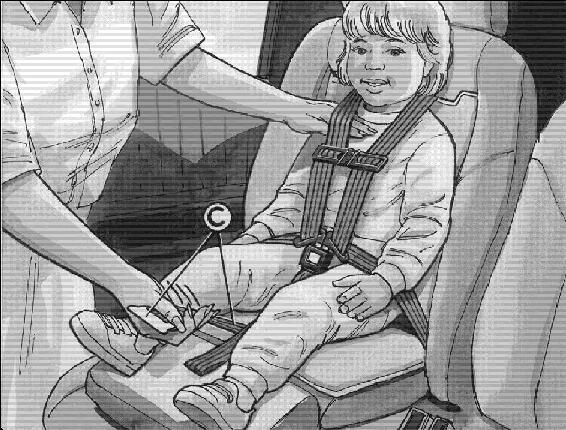
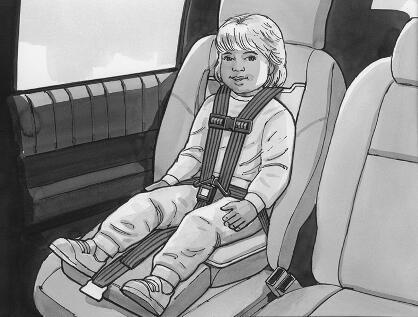
If you expect that the child will sleep while riding, you can recline the seatback. See Split Bench Seats or Bucket Seats .
Removing the Child from the Built-In Child Restraint
- Unfasten the shoulder harness clip.
- Unlatch the harness by pushing the button on the buckle.
- Move one side of the harness off the child's shoulder.
- Move the other side of the harness off the child's shoulder.
- Remove the child from the child restraint cushion.
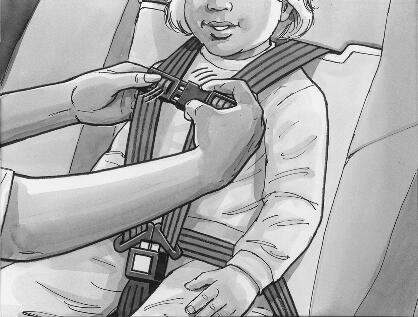
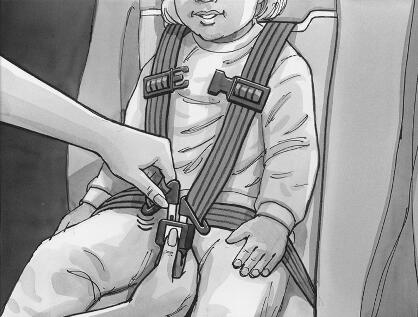
Storing the Built-In Child Restraint
Always properly store the built-in child restraint before using the vehicle's lap-shoulder belt.
- Move both latch plates and both sides of the shoulder harness clip to the bottom of the harness straps.
- Fold the child restraint cushion and leg rest up into the seatback.
- Press the child restraint cushion firmly into the seatback.
- Then press the leg rest firmly into the seatback, and secure it by pressing the upper corners against the fastener strips on the seatback.
- Rotate the head restraint forward and push it all the way down.
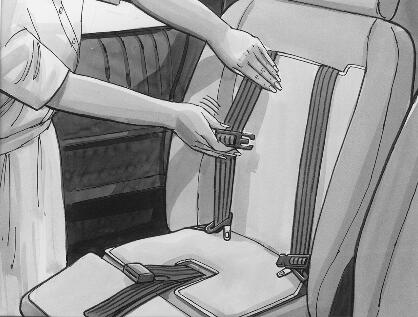
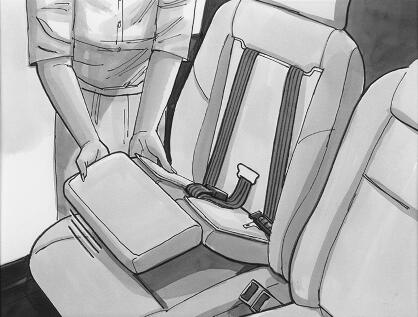
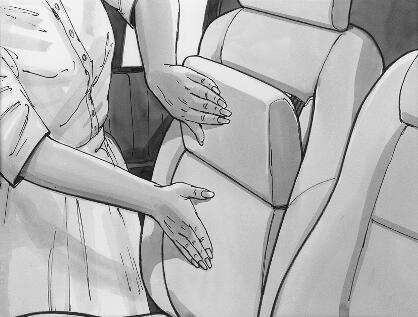
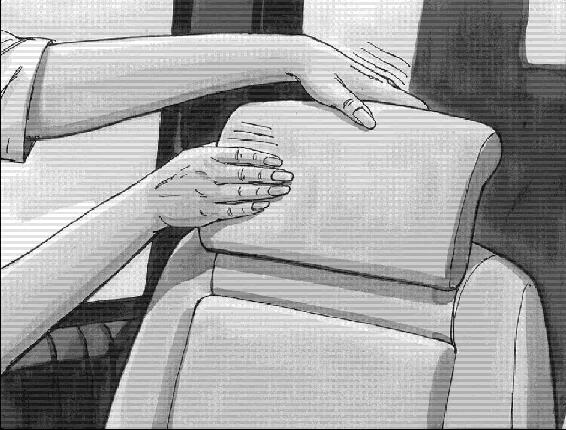
Just like the other restraint systems in your vehicle, your built-in child restraint needs to be periodically checked and may need to have parts replaced after a crash. See Checking the Restraint Systems and Replacing Restraint System Parts After a Crash .
